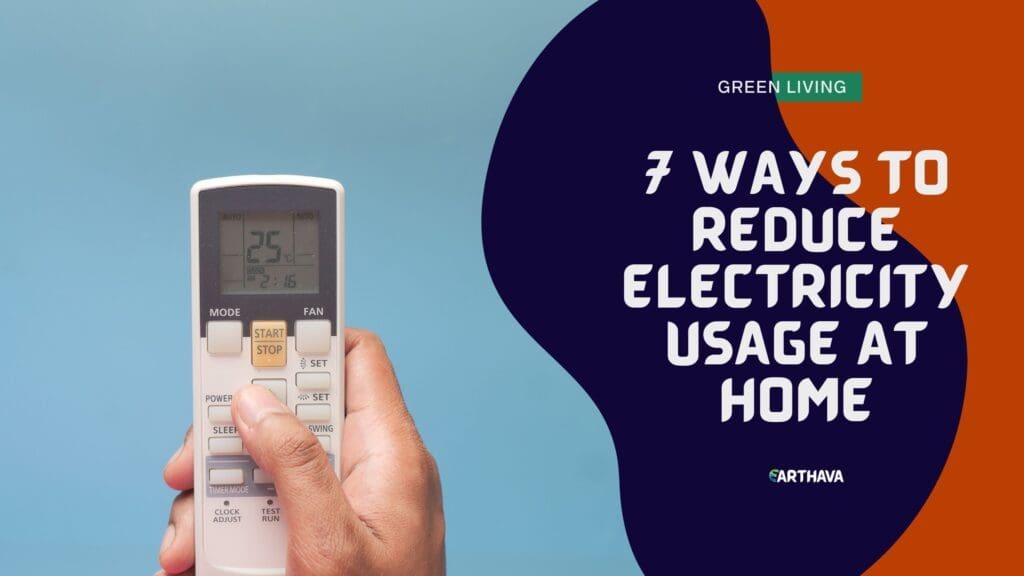Given how electricity costs are increasing each year, it’s understandable that homeowners would look for different energy-efficient strategies to try to cut down their electricity bills. Add to that the fact that the population is soaring, which translates to an increase in energy consumption and, consequently, a rise in greenhouse gas emissions (GHG), and you begin to understand the negative impact of increased electricity use on the environment.

Depending on how much you can afford to invest, energy conservation alternatives range from implementing simple changes into everyday routines to tackling more complex home improvement projects and upgrades. Whether you’re looking to save money by reducing your monthly utility bills or help the environment by lowering your carbon footprint—or both—there are several ways you can achieve that. Here, is a list of simple tricks and smart alternatives that will help you reduce electricity usage at home this year.
Unplug your appliances when they’re not in use
Sometimes, reducing your monthly energy bills can be as easy as turning off a couple of devices and appliances around the house. Although not everyone is aware of this, electronic devices continue to drain energy even when they’re not in use. This is especially true for computers and TVs that we often leave on standby, all because we’re unaware of the ‘vampire power’ and how it can affect our utility bills each month.
Therefore, before you leave the house or go to bed, check whether everything is turned off and unplugged, including the lights in different rooms. Adding smart power strips can make things a lot easier—you simply plug in all your devices, and with a click of a switch, you can turn them off and not worry about wasting electricity.
Make a switch to energy-efficient lighting
Another simple trick to slash your electricity bills would be to make a switch to energy-efficient lighting. Something as simple as replacing your old, incandescent light bulbs for their eco-friendly versions such as LED lights can reduce your lighting costs by up to 75%. They indeed require a bit higher initial investment. However, they can last up to 25 times longer and use up to 80% less energy than traditional light bulbs. Because of that, they’re seen as a more cost-effective lighting option in the long run.
Make use of energy monitors
Keeping track of your energy use is probably one of the best ways to minimize your household’s electricity consumption, and it can easily be achieved with the help of energy monitors. Once they are connected to your home’s electricity meter, they can give you an insight into how much energy is being used in your household. Because of that, you don’t have to guess which devices are draining electricity – an energy monitor will show you that.
Moreover, energy monitors can also help you improve your home’s energy efficiency as they provide valuable information. Of course, not all of them are created equal—different models will possess different features. However, if you know which factors to consider, you’ll be able to choose the one that works best for your needs.
Swap old, inefficient appliances for their eco-friendly versions
Given how appliances contribute to around 13% of electricity use in an average household, it makes sense that you’d want to try to get that number down as well. A great way to do so would be to swap out the old, dated appliances. They usually require more energy to operate, and these costs add up to higher monthly energy bills, so you’re better off investing in new, energy-efficient versions of the said appliances.
Your safest bet? Look for appliances with the Energy-Star label. Although the initial costs of Energy-Star-rated appliances may be higher compared to the prices of the conventional models, their operating costs can be significantly lower. This translates to reduced annual operating costs, thus justifying the higher initial purchase price.
Install solar panels
Another way to make your home more energy-efficient is to look for ways to take advantage of renewable resources such as solar energy. If you’re lucky enough to live in a country where sunny days are abundant, it only makes sense that you’d try to get as much use from that as you can. This can easily be achieved by installing solar panels. By relying on solar power, they generate energy which can then be used for various purposes.
When it comes to excess solar energy, investing in upgrades such as Trojan batteries for solar panels is a great way to ensure the best value and worry-free storage. In utilizing solar power, not only will you significantly reduce your costs but you’ll also lower your carbon footprint.
Upgrade your windows
Your home’s energy efficiency can also be improved by making some smaller, eco-friendly upgrades. Considering how windows can contribute to energy waste, replacing them is another great way to save money and reduce the impact on the environment.
Upgrading your home to energy-efficient models like double-pane windows can significantly lower heat loss or heat gain, depending on the climate of the region you live in. Other than that, it can also help you qualify for rebates or tax credits (federal or local).
Improve your home’s insulation
Aside from boosting your home’s energy efficiency by updating your windows, you should also consider different ways you can improve the insulation of your house. Generally, you should aim to add insulation to your walls, floors, basement, as well as attic.
Just like energy-efficient windows, a well-insulated home can help retain indoor heat in winter. It can also help keep it from entering your home during warmer months. If you’re not sure which level of insulation is needed for your house, browse for regional recommendations to get a general idea, or look for upgrades according to your home’s specifications to mitigate energy loss.
To Sum Up
Reducing the carbon footprint is something more households should prioritize, and no matter how small or big changes they make, the most important thing is that they take that first step. Regardless of whether you opt for extensive energy-efficient upgrades or make some simple changes in your everyday life, these changes do add up. And if every individual made some effort to reduce their energy use, it could be a major step on a global level. Considering how they’ll be doing a big favor both to Mother Nature and themselves by doing so, there’s no reason not to start making positive changes right away.


